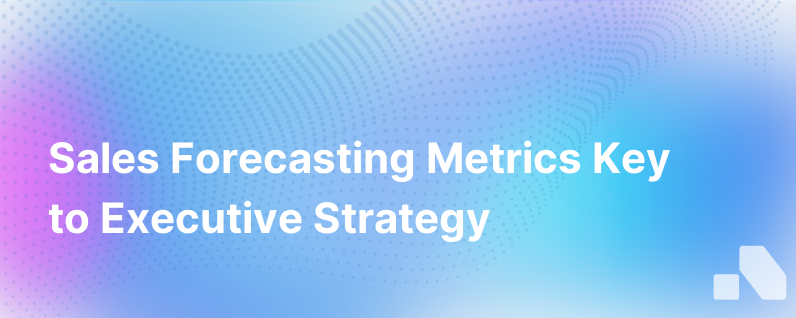Sales Forecasting Metrics
Published on August 9, 2023 by David Zhang
Sales forecasting is arguably one of the most critical yet challenging aspects of business management. An accurate sales forecast guides many strategic decisions, from budget allocations to capacity planning, and can significantly impact a company's financial health. But forecasting relies on complex variables, intuition, historical data analysis, and a deep understanding of sales forecasting metrics.
To assist your forecasting efforts, let's dive into the essential sales forecasting metrics and how they can translate into actionable insights for your business strategy.
1. Lead Quantity
The lead quantity is the total number of potential customers that enter your sales funnel within a specific period. This metric is a starting point for all forecasts, as it signifies the volume of opportunities available to your sales team. To improve lead quantity, the focus should be on marketing efforts and lead generation strategies.
2. Lead Quality
Not all leads are created equal. Lead quality measures the likelihood of leads converting into sales. This is assessed through lead scoring models that evaluate leads based on their behavior, engagement level, and fit to your ideal customer profile. Understanding lead quality can refine forecasting accuracy by indicating not just how many opportunities you have, but how many are truly viable.
3. Win Rate (Conversion Rate)
Win rate, also known as the conversion rate, tracks the percentage of leads that turn into actual sales. It's a direct measure of sales effectiveness and is vital for forecasting as it provides a historical basis for projecting future success. Improving win rates can be a significant lever for improving business performance and forecast reliability.
4. Average Deal Size (ADS)
Average deal size is a metric indicating the average revenue expected from each closed sale. This figure helps forecast overall revenue by multiplying the ADS by the number of expected closed deals. Businesses can use ADS to set realistic targets and to decide on resource allocation for different deal sizes.
5. Sales Cycle Length
This measures the amount of time from a lead's first contact with your company until a deal is closed. A lengthy sales cycle usually indicates a complex sales process, and knowing this metric enables you to estimate when the revenue from current opportunities can be expected. Shorter cycles typically mean more liquidity and forecasting agility.
6. Churn Rate
Churn rate is crucial for businesses with recurring revenue models. It measures the rate at which customers cancel their subscriptions or repeat business. A high churn can significantly impact your sales forecast and is indicative of deeper issues with customer satisfaction or product-market fit.
7. Pipeline Velocity
Pipeline velocity assesses the speed at which leads move through your sales pipeline and become revenue. It considers the number of deals in your pipeline, your win rate, average deal size, and sales cycle length. Faster velocity means more efficient sales processes and more predictable revenue, both of which bolster forecasting precision.
8. Monthly Recurring Revenue (MRR)
Especially crucial for SaaS and subscription-based businesses, MRR is the predictable revenue expected every month. Forecasting with MRR offers stability and can be a basis for predicting growth and scaling opportunities.
9. Sales Quota Attainment
This metric compares actual sales to the sales targets. Regularly monitoring quota attainment helps to identify trends among high and low performers. It also aids in setting realistic sales goals and adjusting forecasts based on actual performance.
10. Historical Comparisons
Historical comparisons aren't a metric as such, but they're pivotal for contextualizing other data. This involves analyzing sales patterns from previous months, quarters, or years to predict future sales. Anomalies, seasonality, market shifts, and cyclical trends can all influence forecasting when reviewing historical performance.
Implementing Sales Forecasting Metrics
Understanding these metrics is the first step; applying them effectively is where the true challenge lies. Here are some steps to ensure the metrics are used optimally for sales forecasting:
- Gain Real-time Access to Data: Real-time data equips your team with the most current insights, ensuring that forecasts are based on the latest trends and patterns.
- Leverage Technology: Tools like CRM systems can help you track these metrics efficiently. Forecasting software and AI can make predictive analysis more accessible.
- Consistency in Measurement: Standardize how you measure metrics to ensure that comparisons overtime are accurate.
- Communication: Ensure that all relevant teams understand the metrics, how they're calculated, and how they impact forecasting.
- Training: Regular training on analytics tools and forecasting methods can help sales teams make more informed decisions based on these metrics.
Conclusion
Sales forecasting doesn't need to feel like peering into a crystal ball. By understanding and effectively leveraging essential sales forecasting metrics, your business can gain a clearer view of future performance and make more informed decisions.
While these metrics provide valuable insights, they're only as good as the data entered and the regularity with which they're reviewed and acted upon. With the right tools, processes, and team alignment, your business can forecast with greater confidence and accuracy, securing a more predictable and successful future.
Incorporating sales forecasting metrics can significantly streamline and enhance the accuracy of your forecasting efforts. Platforms like Aomni, with robust AI capabilities, can help demystify the process and provide real-time insights, ultimately enabling your sales team to focus on what they do best—selling.